Electric bikes, or e-bikes, have gained popularity as a more environmentally friendly form of transportation. However, one common concern among eBike owners is what to do if their battery runs out of charge and they don’t have access to a charger. We’ll look at some different approaches to recharging an e-bike battery without a charger in this blog post. Whether you’re on a long ride and need a quick charge or you simply forgot to bring your charger, these methods will come in handy. So let’s dive in and learn how to keep your bike powered up even without a charger.
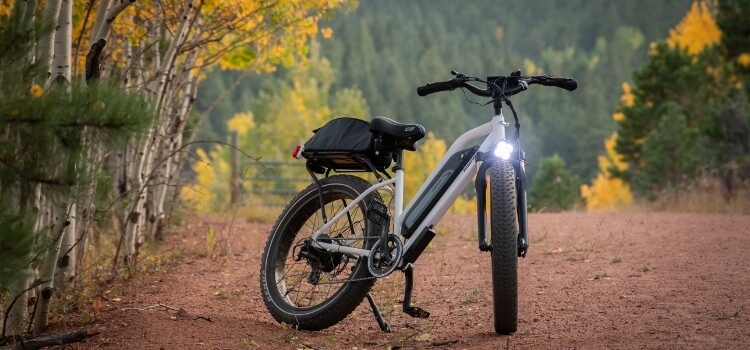
Charge using a solar panel
One alternative method for charging an eBike battery without a charger is to use a solar panel. Solar panels are a sustainable and environmentally friendly way to generate electricity. They harness the power of the sun and convert it into usable energy.
You will require a portable solar panel kit in order to use a solar panel to recharge your eBike battery. These kits typically come with a solar panel, a charge controller, and cables. The steps to charging your e-bike battery are as follows:
Position the solar panel: Find a sunny spot to set up your solar panel. Make sure it is facing the sun to maximize its efficiency.
Connect the solar panel to the charge controller: Use the cables provided in the kit to connect the solar panel to the charge controller. The charge controller controls the flow of power and guards against overcharging your battery.
Connect the charge controller to the eBike battery: Use the appropriate cables to connect the charge controller to your eBike battery. Make sure to follow the manufacturer’s instructions and ensure a secure connection.
Monitor the charging process: Keep an eye on the charge controller’s display to monitor the charging progress. It will indicate the current-voltage and battery level.
Disconnect when fully charged: Once your eBike battery is fully charged, disconnect the cables from the charge controller and solar panel. Safely store the solar panel kit.
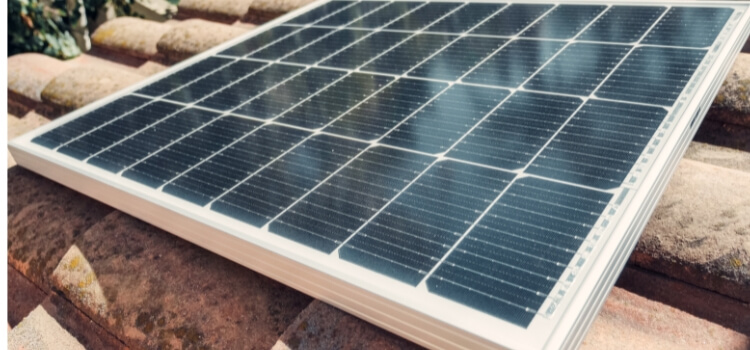
It’s important to note that charging your eBike battery using a solar panel may take longer compared to using a regular charger. The charging speed depends on the size and efficiency of the solar panel, as well as the amount of sunlight available. Plan accordingly and allow enough time for your battery to charge fully.
Using a solar panel to charge your eBike battery is a great way to harness renewable energy and reduce your carbon footprint. It provides a sustainable solution for charging your eBike even when you don’t have access to a traditional charger.
Charge using a Portable Power Bank
If you don’t have access to a traditional charger or a solar panel, you can still charge your eBike battery using a portable power bank. Here’s how:
Choose a compatible power bank: Make sure the power bank you select is compatible with the battery in your e-bike. Check the voltage and capacity requirements of your eBike battery and find a power bank that can provide the necessary output.
Connect the power bank: Connect the power bank to your eBike battery using the appropriate charging cables. Verify that the connections are strong and positioned correctly.
Monitor the charging process: Most power banks have indicator lights or screens that display the current voltage and battery level. Keep an eye on these indicators to track the progress of the charging process.
Disconnect when fully charged: Once your eBike battery is fully charged, disconnect the cables from the power bank. Keep the power bank in a secure place for later usage.

It’s important to note that charging your eBike battery using a power bank may take longer compared to using a regular charger. The charging speed depends on the capacity and output of the power bank. Plan accordingly and allow enough time for your battery to charge fully.
Using a portable power bank to charge your eBike battery provides a convenient and portable solution, especially when you’re on the go or in a remote location without access to traditional charging methods. Just make sure to choose a reliable power bank and follow the manufacturer’s instructions for safe and efficient charging.
Charge using a Car Charger Adapter
If you’re on the go and need to charge your eBike battery, using a car charger adapter can be a convenient option. To charge your eBike battery using a car charger adapter, follow these steps:
Connect the car charger adapter to your vehicle’s cigarette lighter or auxiliary power outlet.
The charging connector on your eBike should receive the opposite end of the vehicle charger adapter.
Make sure your bike is turned off before you start charging.
Turn on your vehicle’s ignition to provide power to the car charger adapter.
Check the charging indicator on your eBike to ensure that it is receiving power. Wait for your eBike battery to charge fully. This may take a few hours, depending on the capacity of your battery.
Once your eBike battery is fully charged, disconnect the car charger adapter from your eBike.
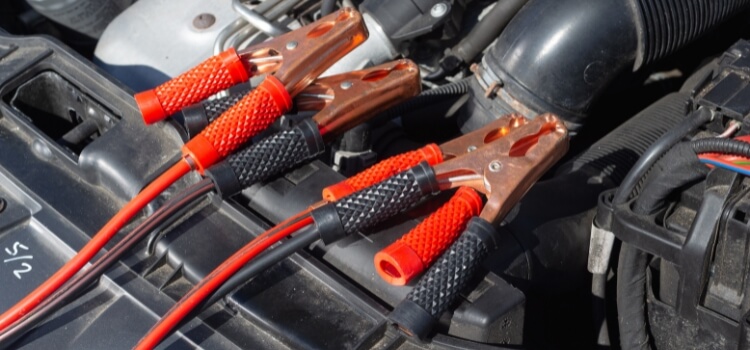
It’s crucial to remember that utilizing a vehicle charger converter may require more time than using a conventional charger to fully charge your e-bike battery. The charging speed depends on the output of the car charger adapter and the capacity of your eBike battery. Plan accordingly and allow enough time for your battery to charge fully.
Using a car charger adapter is a convenient option when you’re on the go or in a remote location without access to traditional charging methods. Just make sure to use a reliable car charger adapter and follow the manufacturer’s instructions for safe and efficient charging.
Charge using a Generator
Using a generator to charge your eBike battery is a great option if you don’t have access to traditional charging methods or if you’re in a remote location. Here are some actions to take:
Make sure you have a compatible generator. Check the power output of the generator and compare it to the charging requirements of your eBike battery. You want to ensure that the generator can provide enough power to charge your battery effectively.
Install your generator in a space with good ventilation, ideally outside. Generators produce exhaust fumes, so it’s important to have proper ventilation to prevent carbon monoxide poisoning.
Connect your eBike charger to the generator. Follow the manufacturer’s instructions on how to properly connect the charger to the generator. Make sure all connections are secure and No wires are frayed or exposed.
Run the generator after starting it. The generator will provide the necessary power to charge your eBike battery. Keep an eye on the generator’s fuel level and make sure you have enough fuel to last for the duration of the charging process.
Wait for your eBike battery to charge fully. This may take a few hours, depending on the capacity of your battery. Make sure the charger is working correctly and keep an eye on the charging process.
Connecting the charger to the generator after your e-bike battery has finished charging is a good idea. Be sure to shut off the generator and store it in a secure location.
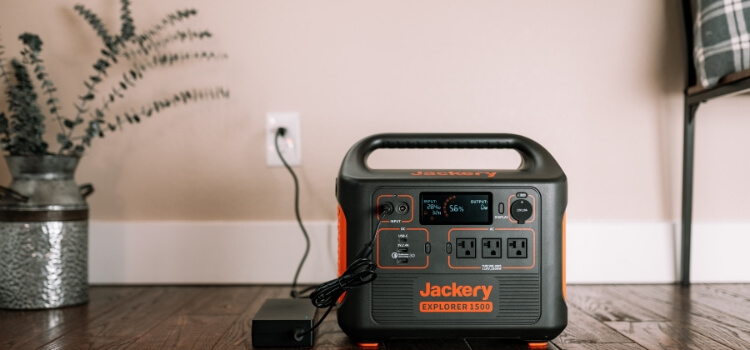
Charging your eBike battery using a generator can be a convenient option when you’re in a remote location or during power outages. Just make sure to follow all safety precautions and ensure you have a compatible generator that can provide enough power for your battery.
Charge using a Charging Station
Charging your eBike using a charging station is a convenient and safe option. Here are the steps to follow:
Find a charging station: Look for charging stations specifically designed for eBikes. These can be found in many urban areas, parks, or designated bike stations. Use online maps or apps to locate the nearest charging station.
Once you’ve located a charging station, find the charging connector on your e-bike and plug it in. It often lies next to the battery compartment. Plug the charging cable into your eBike’s charging port.
Start the charging process: Some charging stations require you to activate the charging process using a mobile app or by scanning a QR code. To start the charging process, adhere to the charging station’s instructions.
The majority of charging stations contain a display that indicates the charging status. To make sure that your bike is charging properly, keep an eye on the display. It is also a good idea to set a timer or an alarm to remind yourself to check on your bike periodically.
Wait until the battery is fully charged: The amount of power stored in your eBike’s battery will affect how long it takes to charge. It can take a few hours to fully charge. Use this time to take a break, grab a snack, or explore the nearby area.
Disconnect and secure: Once your eBike’s battery is fully charged, unplug the charging cable from your eBike’s charging port. Make sure to turn off the charging station if necessary. Store your items, including the charging cord, in a secure place.
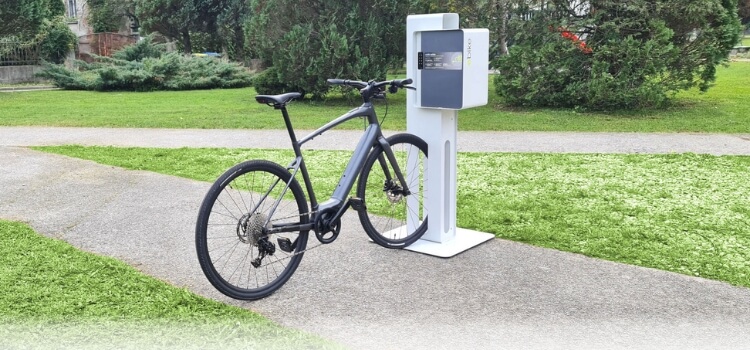
Charging your eBike at a charging station is a convenient and reliable option ensuring a fully charged battery for your next ride. Make sure to familiarize yourself with the charging station’s instructions and follow any guidelines or restrictions provided by the facility.
Charge using a DIY Charging Method
Charging your eBike using a DIY method can be a cost-effective and convenient option, especially if you don’t have access to a charging station. Here are some steps to follow:
Find a compatible charger: Make sure you have a charger that is compatible with your eBike’s battery. Find a charger that meets the voltage and amperage demands of your battery by checking its specs.
Connect the charger: Locate the charging port on your eBike and connect the charger to it. Make sure that the connection is solid and that there are no faulty or loose components.
Find a power source: Look for a power outlet or any other power source that can provide electricity. It could be a wall outlet, a portable generator, or even a solar panel. Verify the dependability and stability of the power supply.
Start charging: Once you have connected the charger to your eBike and found a power source, turn on the power supply. The charger should start charging the battery. Make sure everything is functioning correctly and that the battery is charged by keeping an eye on the charging process.
Safety precautions: While charging, make sure to follow safety precautions. Avoid charging in damp or wet situations, and keep the power source and charger away from anything combustible. Disconnect the charger right away and get expert assistance if you detect any strange odors, heat, or sparks.
Disconnect and secure: Once your eBike’s battery is fully charged, disconnect the charger from the bike and the power source. Keep the charger dry and safe, apart from any potential harm or dangers.
Please note that charging your eBike using a DIY method may not provide the same level of convenience and safety as using a charging station. It’s important to follow the manufacturer’s guidelines and recommendations for charging your eBike’s battery to ensure its longevity and performance.
Conclusion
In conclusion, while it may be challenging to charge a bike battery without a charger, alternative methods can be used. These include using a power bank, jump-starting the battery, or using a solar charger. It’s important to ensure safety and follow proper guidelines when attempting to charge a bike battery without a charger. Additionally, it’s recommended to have a charger available for regular maintenance and charging of the battery.